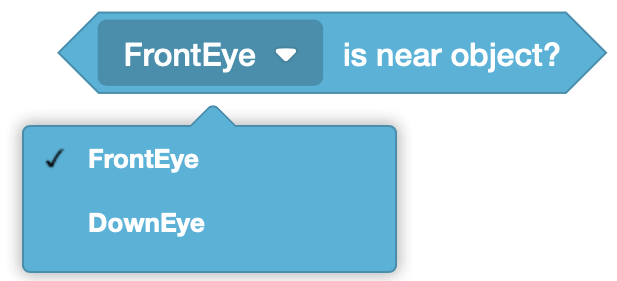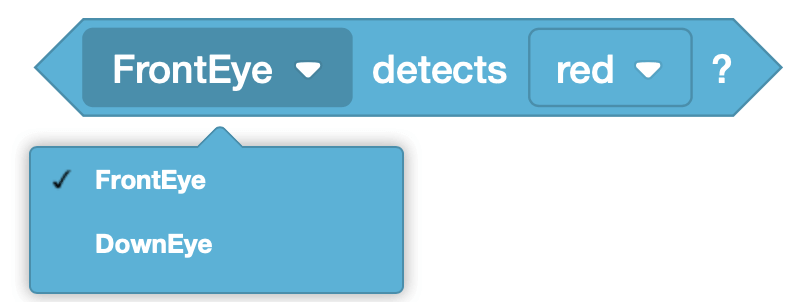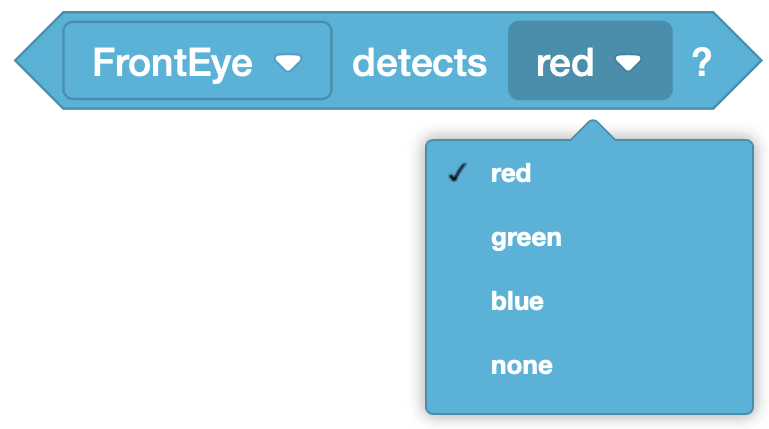Lesson 1: Eye Sensor Blocks
<Eye Sensor near object> Block
The <Eye Sensor near object> block reports if the Eye Sensor is close enough to an object to detect a color (red, green, blue, none).

The <Eye Sensor near object> block is a Boolean reporter block that reports TRUE when the Eye Sensor is close to an object that has detectable colors, and reports FALSE if the Eye Sensor is not close to an object that has detectable colors.
The Front or Down Eye Sensor can be selected from the drop-down menu on the <Eye Sensor near object> block.

Using Switch Blocks
This is the Switch <Eye sensor near object> block.

You can change the sensor parameter from the Front Eye Sensor to the Down Eye Sensor by replacing the code "front_eye" with "down_eye." Note that the sensor name should be typed using lowercase letters. Simply type in the parameter or hit the enter key or tab key to select the parameter suggestion that appears.

<Color sensing> Block
The <Color sensing> block reports if one of the Eye Sensors detects a specific color.

Choose which Eye Sensor to use on the <Color sensing> block.

The <Color sensing> block is a Boolean reporter block and reports TRUE when the Eye Sensor detects the selected color. The <Color sensing> block reports FALSE when the Eye Sensor does not detect the selected color. Choose which color to detect on the <Color sensing> block.

Using Switch Blocks
This is the Switch <Color sensing> block.

You can change the color parameter by typing a different color inside the parentheses. Be sure to enter the color using all capital letters. Suggestions for the color parameter will appear as you modify the text.

Like the <Eye sensor near object> block, you can change the sensor parameter from the Front Eye Sensor to the Down Eye Sensor by replacing "front_eye" with "down_eye." Be sure to enter the sensor name using lowercase letters. Using proper syntax is important, so be sure to include an underscore (_) between the two words in the sensor name.

Select the Next button to continue with the rest of this Lesson.